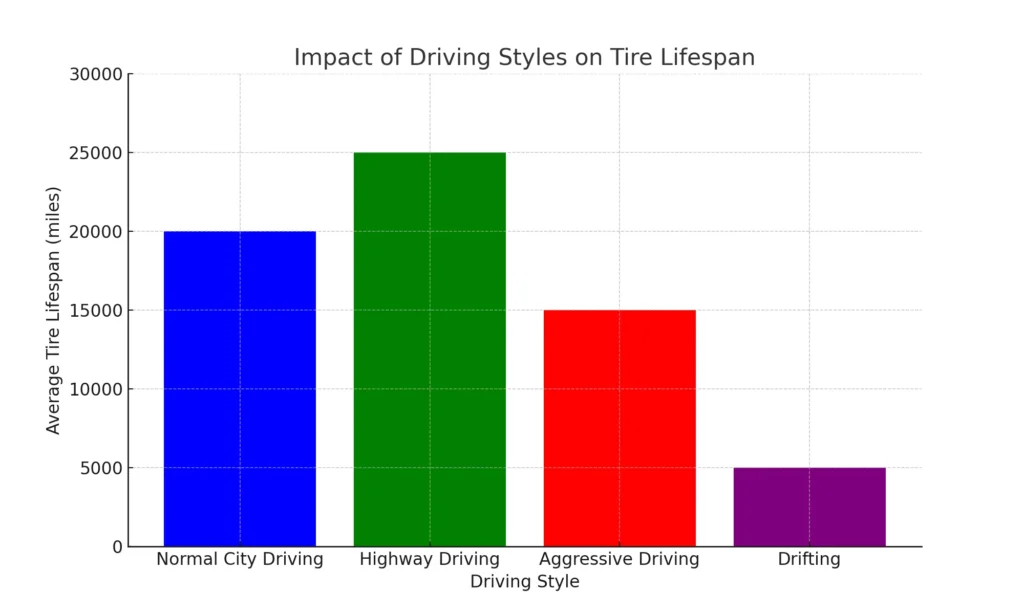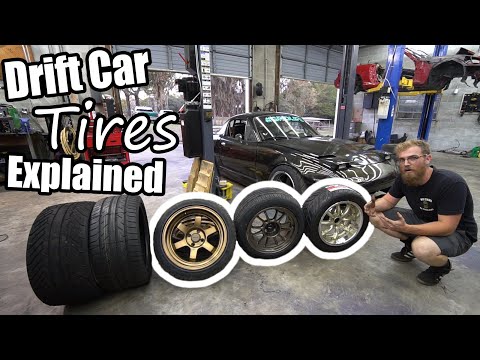Does Drifting Damage Your Tires?
Drifting looks cool in movies, but what does it do to your car tires? Let’s explore if this flashy driving move is actually hard on your tires.
Does Drifting Damage Your Tires?
Yes, drifting does damage your tires. It causes them to wear out very quickly.
Understanding the Impact of Drifting on Tires
Drifting is a driving style where the driver intentionally uses oversteer to make the car lose traction while still controlling it through a turn.
It can have a big impact on tire wear and the overall safety of the vehicle. Moves like the power slide, handbrake turn, clutch kick, and counter-steering are key for performing a drift, but they also put a lot of unusual stress on your tires.
This stress is not just about what happens right now but also how it affects the tire performance and safety over time.
The excitement of drifting might be clear, with its big tire smoke and thrilling action, but the consequences on your tires can be serious.
Wear and tear from drifting speeds up tire degradation, lowering both the tire’s lifespan and its effectiveness in maintaining grip.
Also, drifting often requires more frequent tire maintenance, like tire rotation, tire balancing, and alignment checks, to ensure even wear and top performance.
Understanding these effects is vital for tire safety and relates to wider aspects of driving safety and road safety. It needs a deep knowledge of how changes to suspension settings, horsepower, and torque influence how your vehicle handles these high-stress maneuvers.
Knowing when tire replacement or tire inspection is needed becomes a crucial part of regular vehicle upkeep to avoid possible risks on the road.
See also: How Temperature Affects Tire Health | The Benefits of All-Season vs. Winter Tires | How Does Tire Pressure Affect Fuel Economy?
Brief History and Popularity of Drifting
Drifting started on the mountain roads in Japan, where this exciting type of driving first came about. Over time, drifting changed from just a small hobby to a big deal all over the world.
Big steps like the making of special drift cars and the start of professional drift leagues marked this change.
The way drifting has grown is closely connected to its pioneers and big-name drifters, who have shown what these cars can do on circuits and tracks worldwide.
Drifting became popular very quickly, gathering a huge fanbase from the USA to Europe, and became a well-known part of car culture. Its growth has been helped a lot by how it’s shown in media, like video games and movies, making it a big part of the modern drift community and lifestyle.
Drift techniques, like the power slide and controlled oversteer, are not just for show but also a way to test how much rear-wheel drive vehicles and their car modifications can handle.
As drifting turned into official competitions and championships, it provided a way for teams and enthusiasts to show off their skills.
Drift racing has become an important part of motorsport, with champions leading the way in making it a thrilling and skillful sport.
The impact of drifting is clear, as it keeps bringing in new fans and shaping drift culture in different places.

Comparison of Tire Wear Between Normal Driving and Drifting
The comparison of tire wear between normal driving and drifting shows us how different ways of driving affect tire safety and how long tires last.
Normal driving includes going to work, driving on highways, and in the city. This type of driving follows speed limits and traffic rules, which helps tires wear out evenly and last longer.
These conditions keep the tread depth good and stop tires from wearing out unevenly, which helps avoid bald tires through steady tire pressure and tire checks like wheel alignment and tire rotation.
On the other hand, drift racing uses strong moves like power slides and fast turns that make the car oversteer and cause a lot of tire smoke, which shows the tires are wearing out a lot.
The hard use in drifting leads to tires lasting less long and wearing out unevenly, meaning you need to change and look after your tires more often.
Knowing these differences and effects is very important for tire safety and controlling the vehicle, especially because not taking care of your tires properly increases the chance of accidents.
Regular checks and maintenance are essential for staying safe on the road and making sure your car performs well, whether you’re driving every day or drifting.
Identifying Physical Signs of Damage by Drifting
Identifying damage from drifting means doing a detailed inspection and examination of your tires to look for specific wear patterns and other signs of degradation:
- Wear Patterns: Check for bald spots and uneven tread depth, which often come from the high-speed cornering and power slides typical in drift racing. These patterns show a lot of wear and tear.
- Sidewall Damage: By looking at the sides of the tires, you might see changes in shape or cuts. These happen because of the sideways stress and tire deformation from oversteer moves.
- Tire Safety Checks: To maintain tire safety and vehicle control, check the tire pressure and perform regular inspections. If you see a lot of wear or damage, consider getting a professional inspection to learn more about the damage and whether you need new tires.
Doing routine maintenance like tire rotation and wheel alignment can help lessen some of the damage, but drifting naturally raises the chance of accidents and affects road safety. Being ahead of the game with tire care and checks can help handle these risks.
Tips for Minimizing Tire Damage When Drifting
To cut down on the wear and tear from drift racing, follow these guidelines and best practices for keeping tire safety and improving vehicle control:
- Tire Maintenance: Regularly check tire pressure and follow schedules for tire rotation and wheel alignment. These steps help in controlling degradation and keeping good traction.
- Controlled Drifting Techniques: Work on getting better at throttle control, braking techniques, and how you steer. These careful actions can reduce the harshness of tire wear during power slides and high-speed cornering.
- Suspension Tuning: Change your vehicle’s suspension settings to better deal with drifting. The right setup not only decreases tire degradation but also lowers accident risk by improving handling.
Using these recommendations will help in controlling the damage and destruction usually caused by tough driving moves, ensuring both road safety and the long life of your tires.




